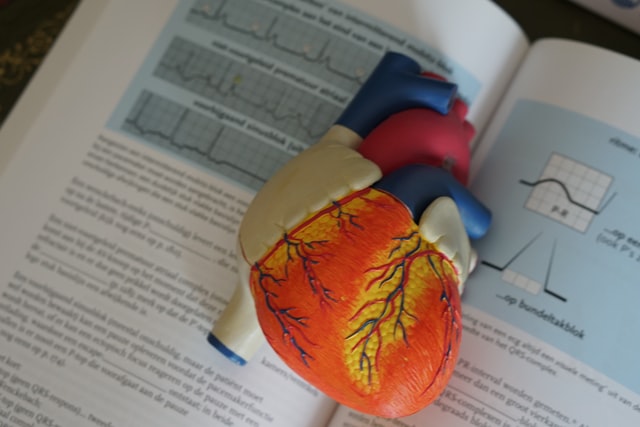How to break up big tasks: 3 practical examples
One of the big messages in Atomic Habits is to create systems to help you get things done. That way, when you’re not motivated or don’t have much time, your system can still help you be productive. And this sounds like a great idea. But for the longest time I couldn’t figure out where to start or what a system would look like for me. Then I heard this episode of The Tim Ferriss Show featuring James Clear where he shared examples of some of his systems. And then it started to make more sense. It comes down to breaking recurring projects into smaller manageable tasks that you can work on throughout the week or month. So naturally, the next thought is how can I do this as a student to make my life easier? Here are 3 practical examples on how to break up big tasks.
1. Chunk your lecture reviews into smaller parts
An inevitable aspect to life as a med student is studying. This is a recurring and on-going task throughout med school and even into residency. So it’s important to have strong study habits and a systematic approach to studying.
One way to be more systematic with studying is to chunk your lecture material into 3-4 smaller topics. If one topic is really long, break that down into subtopics.
Then review one topic at a time and pause after each to explain in your own words what you just read.
This method has 2 main benefits.
This makes studying more manageable
The first benefit is that chunking the lecture makes it more manageable to get through. After a long day of classes, it’s hard to get yourself to study. Let alone cover an entire lecture. Especially the later you get in the week and the further you get in the term.
So you’re more inclined to use passive study techniques. Or not study altogether.
But if you know the lecture is broken into smaller chunks and you only need to get through 2 chunks that night to not fall completely behind, then you’ll be more likely to do it.
And once you get started, you might even want to keep going. But if not, at least you’ve done something for that lecture material and there’s less catchup to do on the weekend.
This makes it easier to use active studying
The other, and perhaps bigger benefit, is that this chunking system forces more active learning.
When you’re tired or unmotivated, it’s tempting to use passive study techniques, like re-reading lecture slides. Even though you know it’s ineffective and you should be studying actively instead.
Like pausing every few slides or after each topic to explain what you’ve understood. And ideally, doing it out loud like you’re explaining to a friend.
It’s easy to reason through the concepts in your head and think you’ve understood. But it’s quite different when you have to verbalize those ideas. You’ll probably find yourself stumbling through a half-coherent explanation which lets you know which material you haven’t quite understood yet. It can also be a sign to look for resources outside the lecture that can help you better understand that topic.
The reason that many students run from active studying is that it requires more effort. And it’s tiring.
But if you know that you’ll be testing yourself after every few slides rather than at the end of 45 slides, you’ll be more likely to do it.
So breaking up your lecture review into smaller topics makes it more manageable to do, even on the long days, and it helps you get the most out of your studying.
And in the long-term, this system help you keep up with all the material, which is one way to avoid burnout in med school.
2. Write the headings for your essay/research paper/application first
Unfortunately, writing never goes away. In med school, you may end up doing research, which eventually requires writing for your publication. And if not, you’ll at least have to do some writing for your residency applications. Which can be daunting and overwhelming. So it’s helpful to have a system to break up this big task.
My blog writing system
I’ll share my blog writing system as an example, since I post every week.
I usually write these posts over a few days. The timing differs from post to post. But I always start by writing the headline and the headings so I know exactly what ideas I want to communicate.
It’s very basic but it really helps.
Whenever I have an idea for a potential post, I immediately create a draft with just the headline. And I include at least 3-4 ideas in the form of headings that I can write about.
The more specific the headings are, the easier it is to write. In fact, I’ve noticed it’s the easiest to complete the post when I write the headings as a question.
When I have some time later in the week, I know exactly what topic that section is meant to address which makes it easier to write.
Write all your thoughts for each heading
Once you have all the headings, include a few potential points to discuss under each heading.
Then come back to the piece later and fill in the sections with whatever thoughts you have. They don’t have to be great. But it gives you a starting point which makes it much easier to work from.
It’s easier to edit the piece rather than write everything from scratch, especially when you’re crunched for time.
There have been so many times when I’ve written some blog sections in a rush. Then dreaded going back to edit the piece because I didn’t think the writing was very good. Only to realize that the writing wasn’t bad at all and I only have a fraction of the work to do now because I got most of it done earlier.
In those moments, I really appreciate the value of having a system.
3. Spread out the work by prepping ahead
Another inevitable reality of med school is that life is very hectic. So it becomes easy to neglect yourself and skip meals to save time. But in these high stress moments, it’s even more important to take care of yourself. For your longevity, it’s worth the time investment of creating a system that makes it easier to eat well.
One way to do that is to spread out the work by prepping ahead of time.
Eating more fruits and vegetables
For example, if you want to eat more fruits and vegetables, prep everything in the morning.
I wash and cut up my fruit in the morning, usually when I’m about to make breakfast. And while I’m at it, I also cut up everything for my salad for later in the evening.
The only part I leave until dinner time is adding the salad dressing (olive oil, lemon, salt, black pepper).
When I have all the work done in the morning, it’s easier to follow through later. All I have to do is keep the fruit on my desk as I’m studying. So it’s more likely that I’ll eat the fruits rather than grab some chips and Oreos.
And usually, the later you get in the day, the busier it gets. The studying takes longer than planned or some other things come up.
And when you’re pressed for time, it’s easier to justify not doing the harder things. Oh I don’t have time to prep dinner or make a salad to go with it. Let me just eat out or skip this meal.
Prep before cooking
Similarly, when you have to cook, spread out the work by doing some prep ahead of time.
If I’m cooking something that requires a lot of chopping, I try to do that earlier in the day. Or in between studying when I need a break. Like chopping tomatoes and potatoes.
When it comes time for the actual cooking later in the afternoon, it’s much faster to do. So I’m more likely to do it again since I know it won’t take too long.
And over time, these systems make it easier to develop and maintain the habits we want. Which is the essence of Atomic Habits.
Final thoughts
So those were some practical examples of how to break up big tasks. Once you start doing it in one area of your life, like with studying, it becomes easier to do in other areas as well.
What’s one system that you can start working on today?
-M
Want updates on the latest posts? Email theislandmedonline@gmail.com or complete this form to join the email list today!







